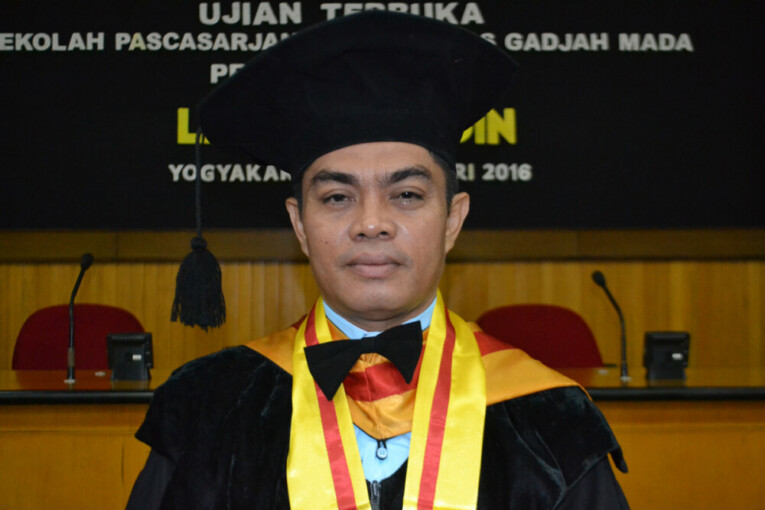
Phrases like ‘lupa kacang pada kulitnya’, ‘air tenang menghanyutkan’, or ‘kuman di seberang lautan tampak, gajah di pelupuk mata tidak tampak‘, are often used to indicate a particular purpose to the other person. This kind of speech includes proverbs. Although rarely uttered in a conversation among young people, does not mean they have vanished. Proverbs have an interesting side which make them frequently expressed by state leaders, community leaders, orators, song writers, artists, philosophers, motivators, or journalists.
“Proverb is an important and interesting form of language usage to the owner. Besides as a linguistic form to preserve local wisdom, proverb is also a piece of civilization history and culture of a community, ” Sailal Arimi, SS, M. Hum, said at his open doctorate examination Faculty of Cultural Sciences.
In his dissertation, he described the main problems with the identity of Indonesian proverbs in four areas, namely the redefinition and understanding, categorization, patterning cognition, and the dynamics of its vitality. Proverbs can be understood in a contextual and textual approach. To examine the characteristics of linguistics, Sailal redefined proverb as a construction phrase or sentence with a structure that is agreed upon as fixed. For its user, proverb is used to explain the phenomenon of life, as a whistleblower, illustrator, stateme and a valuable advisory tool. Not only for the great figures, but also for the general public. Due to its compact shape, it is common to use proverb to simplify a complex problem.
“For example, to advise arrogant children, we can use proverbs such as ‘air beriak tanda tak dalam’, or ‘seperti ilmu padi, makin berisi makin merunduk,’ explained the man who has been a lecturer in the Department of Indonesian Literature UGM since 1999.


